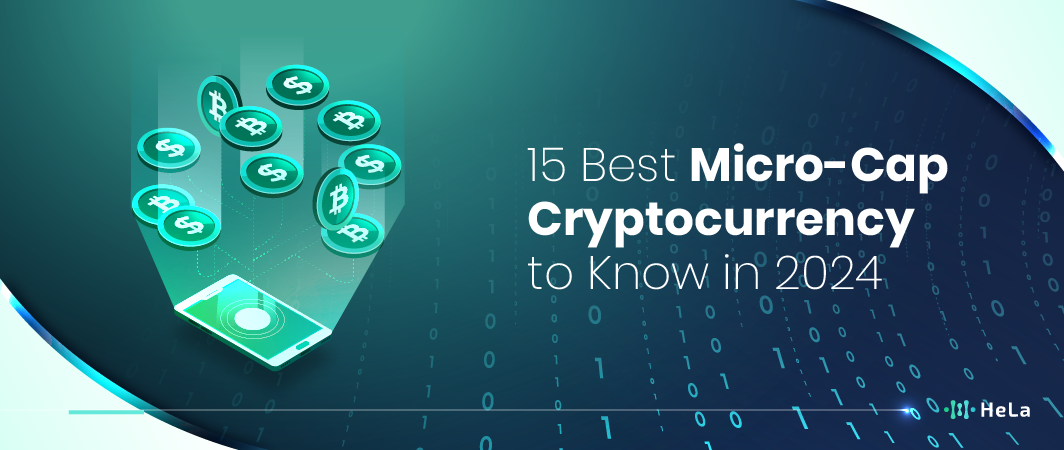In this guide, we’ll introduce you to 15 of the most promising micro cap cryptocurrencies for 2025—potential investment opportunities you might be looking for. Before diving into the list, we’ll explain what micro-cap cryptocurrencies are and how to evaluate them for your investment strategy.
The crypto world is vast, with new projects constantly emerging. Among these are micro-cap cryptocurrencies—hidden gems with market caps typically under $50 million. While they may not receive as much attention as larger coins, they offer high-risk, high-reward potential for investors willing to take a chance. These projects are often in the early stages of developing innovative technologies or ideas, providing significant room for growth if the right factors align. However, their new and less established nature means they come with inherent risks, and not every micro-cap will succeed.
What Is Micro Cap Crypto?

Micro cap cryptocurrencies are digital assets that have a market capitalization below $50 million. Market capitalization, or “market cap,” refers to the total value of all the coins or tokens in circulation multiplied by the current price of the asset. Cryptocurrencies with lower market caps are often younger, less established, or niche projects that haven’t yet gained widespread attention.
These cryptocurrencies can be highly volatile because of their smaller size and lower liquidity. Price movements can be more dramatic, and trading volumes are usually lower, making it harder to enter or exit positions without affecting the price. While this volatility can lead to higher gains if the project succeeds, it can also result in sharp losses if the project fails or struggles to gain adoption.
Micro-cap cryptos are favored by investors willing to accept greater risk in exchange for the possibility of significant returns. Many notable cryptocurrencies, such as Bitcoin and Ethereum, once started as small-cap assets before growing into the giants they are today.
15 Best Micro Cap Cryptocurrencies in 2025

In 2025, there are several micro cap cryptocurrencies that stand out due to their innovative technology, active communities, or strong use cases. Below is a list of 15 micro-cap cryptocurrencies that could be worth your attention:
1. IMX (Immutable X)
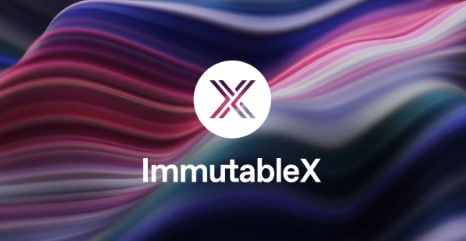
Immutable X is a Layer 2 scaling solution for Ethereum, designed specifically for NFTs and gaming applications. By eliminating gas fees and providing high transaction speeds, it enhances the user experience without sacrificing security. This makes it ideal for platforms looking to mint, trade, or integrate NFTs into their ecosystems.
Key Features:
- Gas-free trading on Ethereum.
- High transaction speed for NFTs.
- Strong focus on gaming and NFT marketplaces.
- Scalability without compromising security.
2. OCEAN (Ocean Protocol)

Ocean Protocol is a decentralized platform that empowers data owners by giving them control over how their data is used and sold. By allowing secure data sharing and monetization, it provides a solution for individuals and companies wanting to trade data safely while maintaining privacy. Its blockchain-agnostic design ensures flexibility and wide adoption across various sectors.
Key Features:
- Decentralized data marketplace.
- Focus on data privacy and control.
- Provides secure monetization of data assets.
- Blockchain-agnostic design.
3. RAD (Radicle)
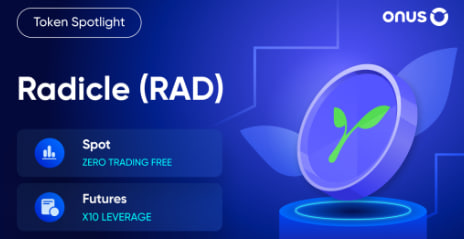
Radicle is a decentralized platform for open-source code collaboration, offering an alternative to centralized hosting services like GitHub. By leveraging blockchain technology, Radicle ensures that projects remain censorship-resistant and fully decentralized. Integrated with Ethereum, it allows governance through tokens and enhances security for developers working on open-source software.
Key Features:
- Decentralized code collaboration.
- Censorship resistance.
- Integrated with Ethereum for project governance.
- Enhanced security and privacy for developers.
4. RUNE (Thorchain)
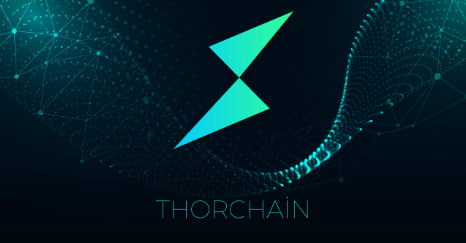
Thorchain enables decentralized, cross-chain liquidity, allowing users to swap tokens seamlessly between different blockchains without the need for intermediaries. This functionality addresses one of the key challenges of blockchain interoperability. As a decentralized liquidity provider, Thorchain enhances the user experience in a multi-chain world, making token swaps fast and efficient.
Key Features:
- Facilitates cross-chain token swaps.
- Decentralized liquidity provider.
- No intermediaries required.
- Expands interoperability in the blockchain space.
5. RSR (Reserve Rights)

The Reserve Rights protocol creates a decentralized stablecoin aimed at offering a globally accessible and stable digital currency. Its native token, RSR, plays a vital role in maintaining the stability of the Reserve stablecoin, while also acting as a governance tool to influence decisions within the protocol. This combination of stability and governance makes RSR a promising solution for global financial systems.
Key Features:
- Decentralized stablecoin protocol.
- RSR token used for governance.
- Focuses on financial stability.
- Accessible to a global audience.
6. CSPR (Casper Labs)
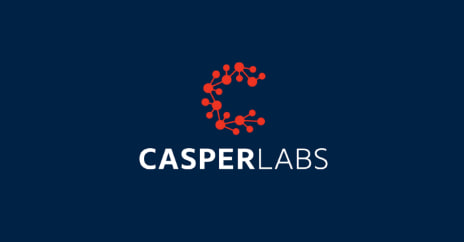
Casper Labs is a scalable and secure Layer 1 blockchain solution designed specifically for enterprises. With its focus on performance and energy efficiency, Casper aims to provide a versatile platform for businesses looking to integrate blockchain into their operations. Its adaptability across various use cases makes it ideal for industries seeking secure and scalable blockchain solutions.
Key Features:
- Scalable Layer 1 blockchain.
- Enterprise-grade security.
- Focuses on performance and energy efficiency.
- Adaptable for various use cases.
7. TOWER (Tower Token)

Tower is a decentralized infrastructure platform that provides blockchain developers with the tools they need to build and deploy decentralized applications (dApps). By streamlining the development process, Tower allows developers to focus on innovation while providing the resources necessary for robust dApp creation. This makes it a crucial player in blockchain infrastructure development.
Key Features:
- Decentralized tools for developers.
- Streamlines dApp development.
- Focuses on enhancing blockchain infrastructure.
- Provides developer resources and support.
Also Read: Top 10 Blue Chip Cryptocurrencies to Consider in 2024 (Updated List)
8. GLMR (Glimmer)

Glimmer (GLMR) addresses privacy concerns in blockchain transactions while ensuring scalability. By prioritizing both transaction throughput and privacy, Glimmer offers a balanced solution that appeals to users concerned with data security. It operates on Polkadot’s parachain, providing an additional layer of interoperability and scalability for blockchain projects.
Key Features:
- Privacy-focused blockchain.
- Scalable transaction throughput.
- Balances privacy and performance.
- Suitable for users who prioritize data privacy.
9. DERO (Dero)

Dero combines enhanced transaction privacy with ASIC resistance to ensure a more decentralized and fair mining process. This blockchain focuses on protecting user privacy while offering a secure and egalitarian platform for transactions. Dero’s unique mining structure ensures that centralization risks are minimized, enhancing the overall integrity of the network.
Key Features:
- Enhanced privacy for transactions.
- ASIC resistance for fair mining.
- Focus on decentralization and privacy.
- Secure and private transactions.
10. IMTL (Immortal)
Immortal is a decentralized derivatives exchange that focuses on offering unique financial instruments such as zero-sum perpetual futures. Through its decentralized governance model, IMTL aims to disrupt traditional derivatives markets by providing traders with innovative tools that are not available on centralized platforms. Its zero-sum structure offers a fresh perspective on futures trading.
Key Features:
- Decentralized derivatives exchange.
- Zero-sum perpetual futures.
- Decentralized governance.
- Focuses on disrupting the derivatives market.
11. FLR (Flare Network)
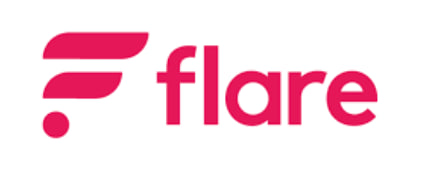
Flare Network enables smart contract functionality on blockchains that do not natively support Turing-complete smart contracts, such as Bitcoin. By bridging the gap between these non-Ethereum chains and decentralized applications (dApps), Flare expands the possibilities for blockchain technology across different ecosystems. It plays a key role in enhancing blockchain interoperability.
Key Features:
- Interoperability between blockchains.
- Smart contract functionalities for non-Ethereum chains.
- Expands capabilities for Bitcoin and others.
- Focuses on decentralized applications.
12. INJ (Injective Protocol)
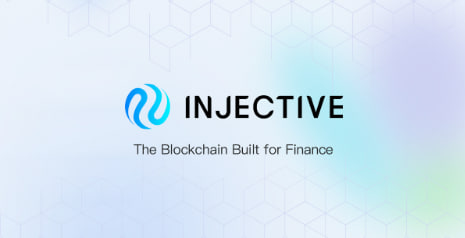
Injective Protocol is a decentralized exchange (DEX) built for fast and scalable derivatives trading. It offers traders low-cost trading with a focus on providing a secure and user-friendly experience. Injective is particularly popular among professional DeFi traders who require high-speed transactions and access to advanced trading tools in a decentralized environment.
Key Features:
- Decentralized derivatives trading.
- Focus on speed and scalability.
- Low-cost trading.
- Built for professional DeFi traders.
13. QUICK (QuickSwap)
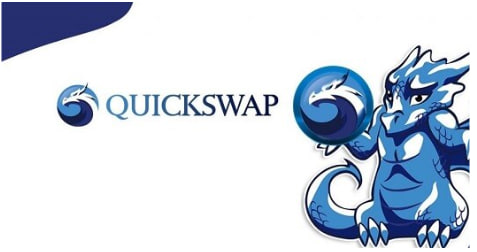
QuickSwap is a decentralized exchange (DEX) operating on the Polygon network. Known for its low transaction fees and high-speed trades, QuickSwap is designed to make decentralized trading accessible to everyone. Its user-friendly platform appeals to both retail and institutional investors, making it a top choice for decentralized trading on Polygon.
Key Features:
- Built on the Polygon network.
- Low fees for transactions.
- High-speed decentralized trading.
- User-friendly for retail and institutional investors.
14. RSK (Rootstock)
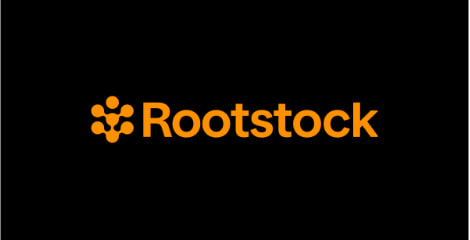
RSK is a smart contract platform that leverages the security of Bitcoin’s blockchain while introducing Ethereum-like smart contract functionality. It allows decentralized applications (dApps) to benefit from Bitcoin’s robust security, making it an important player in the blockchain space for developers who want to build on Bitcoin without sacrificing flexibility.
Key Features:
- Smart contracts on the Bitcoin blockchain.
- Leverages Bitcoin’s security.
- Focuses on decentralized applications.
- Bridges the gap between Bitcoin and dApps.
15. LOOM (Loom Network)

Loom Network provides Layer 2 scalability for Ethereum-based dApps and blockchain games. By improving transaction throughput, it ensures that dApps can scale while maintaining security and efficiency. This makes Loom a popular choice for developers looking to build blockchain-based games and other high-throughput applications.
Key Features:
- Layer 2 scaling solution for Ethereum.
- Scalable for dApps and blockchain games.
- Increases transaction throughput.
- Provides a more efficient environment for developers.
Here is a table that gives a concise overview of the essential details for each micro-cap cryptocurrency:
Cryptocurrency | Primary Use Case | Blockchain | Special Features | Staking/Rewards |
IMX (Immutable X) | Layer 2 scaling for NFT trading | Ethereum (Layer 2) | Gas-free NFT transactions, high scalability | Staking available |
OCEAN (Ocean Protocol) | Decentralized data marketplace | Ethereum | Secure data monetization, data privacy | Data token rewards |
RAD (Radicle) | Decentralized code collaboration | Ethereum | Censorship-resistant open-source platform | Governance staking |
RUNE (Thorchain) | Cross-chain liquidity protocol | Thorchain | Seamless cross-chain token swaps | Liquidity rewards |
RSR (Reserve Rights) | Decentralized stablecoin protocol | Ethereum | RSR token for stablecoin governance | None |
CSPR (Casper Labs) | Scalable blockchain for enterprise use | Casper | Focus on high performance and security | Validator staking available |
TOWER (Tower Token) | Tools for blockchain developers | Ethereum | Developer tools, dApp support | None |
GLMR (Glimmer) | Privacy-focused blockchain | Polkadot | Focus on privacy and scalability | None |
DERO (Dero) | Private, ASIC-resistant blockchain | Native | Privacy for transactions, ASIC-resistant mining | Staking available |
IMTL (Immortal) | Decentralized derivatives exchange | Ethereum | Innovative zero-sum perpetual futures, decentralized governance | None |
FLR (Flare Network) | Smart contracts and interoperability for blockchains | Flare | Enables smart contracts for Bitcoin and other chains | None |
INJ (Injective Protocol) | Decentralized derivatives exchange | Ethereum | Fast, scalable trading for professional DeFi users | Staking and governance |
QUICK (QuickSwap) | Decentralized exchange on Polygon | Polygon | Low fees, fast transactions | Liquidity staking |
RSK (Rootstock) | Smart contract platform on Bitcoin | Bitcoin | Brings dApps to the Bitcoin blockchain | None |
LOOM (Loom Network) | Layer 2 scaling for Ethereum | Ethereum (Layer 2) | Scalable environment for dApps and blockchain games | None |
How to Discover and Evaluate Micro-Cap Cryptocurrencies?
Finding and evaluating micro-cap cryptocurrencies requires diligence and a solid understanding of the market. These coins often don’t have the same media attention or research coverage that larger projects enjoy, so investors need to dig deep into the details. Here are some strategies to help you discover promising micro-cap gems:
1. Explore Niche Communities
Micro-cap cryptocurrencies often have tight-knit communities on platforms like Twitter, Reddit, or Telegram. These communities can be a valuable resource for learning more about a project’s vision and staying updated on developments.
2. Check the Team and Advisors
The team behind the cryptocurrency is critical to its success. Research the founders’ background and their track record in the industry. A strong team with experience in technology, finance, or blockchain can increase the likelihood of a project’s long-term success.
3. Analyze the Tokenomics
Tokenomics refers to how a cryptocurrency’s tokens are distributed, used, and earned. Look for projects with balanced tokenomics where early investors and the team aren’t controlling a disproportionate amount of tokens. Check for inflationary or deflationary mechanisms, which can impact long-term value.
4. Review the Project’s Use Case
Does cryptocurrency solve a real problem? Successful projects usually have a clear use case that addresses a specific need or market gap. Avoid projects that lack clear goals or appear to be clones of existing coins.
5. Look at the Roadmap and Partnerships
A well-defined roadmap can signal that the project has a long-term vision. Look for partnerships with established companies or projects, as these can provide added credibility and increase the likelihood of success.
6. Examine Liquidity and Exchange Listings
Smaller market cap coins can suffer from low liquidity, making it hard to buy or sell large amounts. Research the exchanges where the coin is listed and the liquidity on those platforms.
Also Read: 12 Best Crypto Presale to Check This 2024
Should You Invest in Micro-Cap Crypto Gems?
Investing in micro-cap cryptocurrencies can feel like a rollercoaster. On one hand, they offer the potential for huge returns. On the other hand, they come with a ton of risk. These smaller, up-and-coming projects can skyrocket overnight—or they can crash just as fast. Price swings, changing regulations, and tech issues all hit micro-caps harder than big-name cryptos.
So, should you take the plunge? It all depends on your risk tolerance and financial goals. Let’s break it down.
Is Micro-Cap Crypto Right for You?
- High risk, high reward: If you’re someone who loves the idea of getting in early on a project that could explode, micro-caps might be for you. Just know, there’s a chance you could lose it all.
- Risk-averse? Stick to the big names: If the thought of wild price swings makes you anxious, consider putting your money into more established cryptocurrencies like Bitcoin or Ethereum. These tend to be more stable.
- Know your limits: Only invest money you can afford to lose. With micro-caps, there’s always the chance that your chosen coin could fail.
Why Consider Micro-Cap Cryptos?
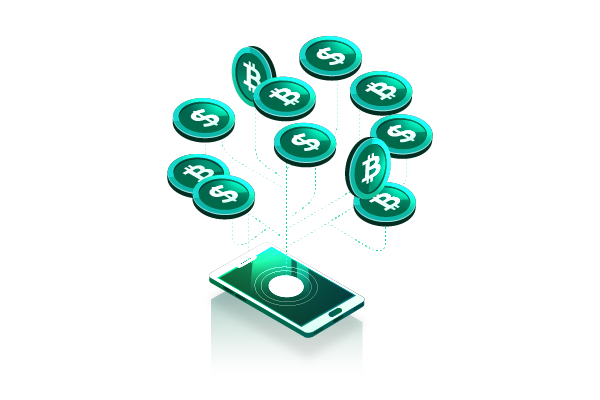
- Early access: You’re getting in on the ground floor before most investors.
- Potential for massive gains: If a project takes off, your initial investment could multiply.
- Innovation: These projects often push the boundaries of blockchain technology, which can be exciting to watch—and profit from.
What to Watch Out For
- High volatility: Prices can swing wildly, sometimes with no warning.
- Regulatory risks: Governments may crack down on certain crypto projects, causing prices to plummet.
- Project failure: Not every project will succeed. Some may not even deliver on their promises.
Micro-cap crypto gems are risky, but they also hold the potential for big rewards. If you’re willing to take the plunge, diversify your investments, do your homework, and stay on top of the latest news. With the right approach, you might just find that diamond in the rough. Ready to explore the wild world of micro-caps? Here’s your chance to get in early—but remember, it’s not for the faint of heart!
Conclusion
Micro-cap cryptocurrencies present a thrilling opportunity for investors aiming to discover under-the-radar projects with significant growth potential. By conducting thorough research and employing a solid investment strategy, you can identify promising ventures that may yield substantial returns. However, it’s essential to be cognizant of the risks involved and approach these investments with caution.
The 15 micro-cap cryptocurrencies highlighted in this article are examples of projects that could make notable strides in 2025. Each comes with its unique strengths and potential hurdles, so it’s crucial to perform comprehensive due diligence before making any investment decisions. Focus on projects with robust use cases, competent development teams, and clear, achievable roadmaps.
In the end, investing in micro-cap cryptocurrencies can be rewarding for those prepared to navigate the market’s volatility and uncertainties. Always remember to invest responsibly and never put in more than you can afford to lose.
Disclaimer: The information provided by HeLa Labs in this article is intended for general informational purposes and does not reflect the company’s opinion. It is not intended as investment advice or recommendations. Readers are strongly advised to conduct their own thorough research and consult with a qualified financial advisor before making any financial decisions.

Joshua Soriano
I am a writer specializing in decentralized systems, digital assets, and Web3 innovation. I develop research-driven explainers, case studies, and thought leadership that connect blockchain infrastructure, smart contract design, and tokenization models to real-world outcomes.
My work focuses on translating complex technical concepts into clear, actionable narratives for builders, businesses, and investors, highlighting transparency, security, and operational efficiency. Each piece blends primary-source research, protocol documentation, and practitioner insights to surface what matters for adoption and risk reduction, helping teams make informed decisions with precise, accessible content.
- Joshua Soriano#molongui-disabled-link
- Joshua Soriano#molongui-disabled-link
- Joshua Soriano#molongui-disabled-link
- Joshua Soriano#molongui-disabled-link
